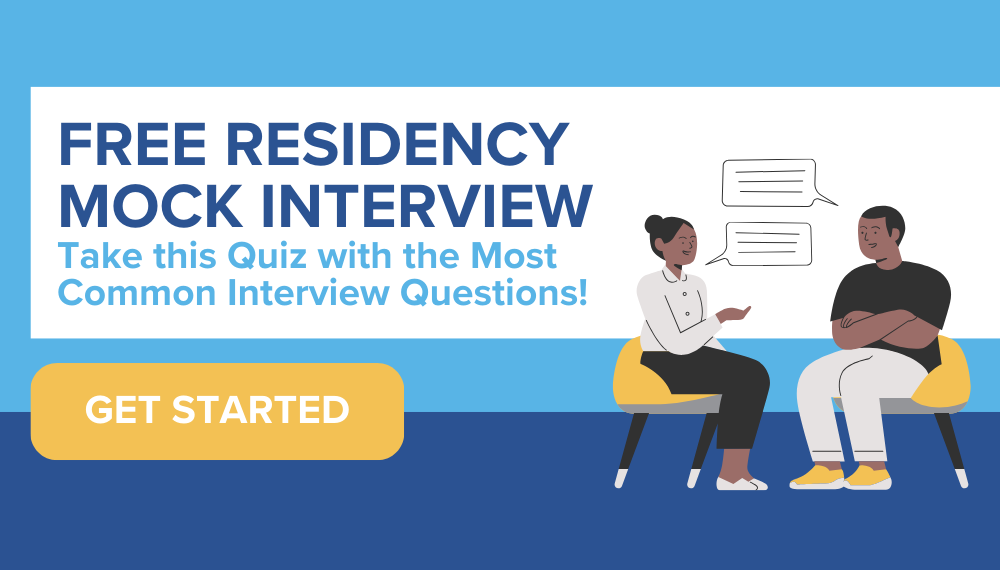Why did you choose emergency medicine?
In the heart of the hospital, the emergency room stands as a sanctuary of controlled chaos. Bright, fluorescent lights cast an eerie glow over the room, illuminating a symphony of activity. Nurses move with purpose, their steps a rhythm to the urgent cadence of beeping monitors and ringing beepers. Amidst the whirlwind of activity, the ER is a theater where fear, courage, pain, and relief intertwine; a place where you feel a strange sense of belonging.
Facing a wide range of clinical challenges and diagnoses excites you, as working in the shock rooms for a trauma or code makes your adrenaline spike. You enjoy a fast-paced work environment and your confidence surges with each undifferentiated illness.
Quite simply, for you, the ER is where it’s at! And what’s not to like? As an emergency physician, you offer immediate care and critical intervention, witness rapid diagnosis, start the case work on diagnostic mysteries and support patients on what is likely the worst day of their lives. Plus, EM docs have good flexibility, useful and transferable skills, and EM is one of the shortest medical residencies.
So—for all those reasons—you have no doubts about going into emergency medicine. It’s great you’re confident in your speciality choice. But maybe you’re less confident when it comes to selecting an EM residency to attend, or want some help when it comes to creating your EM rank list? If so, this post is for you.
**For transparency, I want to share that I’m FM trained, but I work for an academic institution and I’ve picked the brains of many board-certified EM docs, some of whom wear various administrative hats in the EM residency program. (Shout out to them for fielding my questions.) Based on their expert opinion, we’ll take a look at some things you want to keep in mind when selecting an emergency residency program.
Let’s begin by taking a brief look at relevant data for the field of emergency medicine.
About Emergency Medicine Residency Programs
Looking at the Data
Here’s some EM match stats (from NRMP). As you can see, the number of emergency medicine positions has grown every year since 1983.
In the last application cycle, 3,026 positions were available. The total number of applicants was 2,980, and 2,626 matched. This gives us an overall match rate of about 88%.
47.44% of those who matched were US MD seniors, and 37.4% were US DO seniors. 15.19% of those who matched in emergency medicine were IMGs. .
The initial match rate for emergency medicine was higher in 2024, and many of the unfilled positions were quickly taken up by the Supplemental Offer and Acceptance Program (SOAP) for unmatched students. I include these statistics to demonstrate that you should be confident in your application to emergency medicine residency. Confidence in your own application and during interviews means you can be selective in which EM programs you rank and have more say in where you ultimately end up training!
Residency Interview Season
As an applicant, you can expect Interviews from October to early January. Reach out to programs you have an interest in (or signaled) if you haven’t heard from them by mid-November (do it before the holiday season). Once you have about a dozen interviews under your belt, you can be a bit more selective about the future interviews you actually take and the programs you rank.
I implore my students to reach out to programs throughout the season. Do so in a tactful manner, and if you need help starting communications, chat with one of our residency counselors.

Approaching residency interview season and need some extra prep to make a good first impression? We’ve got you covered. Boost your confidence with this FREE Residency Mock Interview and practice your responses to these common interview questions!
14 Things to Look for in an Emergency Medicine Residency Program
As with most specialties, choosing a good emergency medicine residency involves determining which program is the best fit for you, as each individual has different career goals. Thus, you have to find the program that best serves your needs.
You may be thinking, “Great, what a generic answer, how does that help me?” Well, here’s some specific suggestions on things to look for:
1. ACGME Accreditation
The Accreditation Council for Graduate Medical Education is the body responsible for accrediting all graduate medical training programs in the United States. It’s a nonprofit, private council that evaluates and accredits medical residency and internship programs. This is a must have, and a bare minimum, really.
2. Diverse Patients and Pathologies
It’s a numbers game. The more patients and illnesses you see, diagnose, and manage, the more prepared you’ll be as a trainee finishing up residency. Ideally, the hospital you train at has an ED with over 30,000 visits. Above three percent of them should be critical patients (ICU, shock rooms, or operating room caseloads).
Emergency medicine residents should see all types of patients. EM physicians should be comfortable stabilizing pediatric patients as well as adults and geriatrics. Get comfortable managing a wide spectrum of cases, from decompensated cirrhosis to acute psychosis to fluid overload secondary to heart failure. For a wide spectrum, think not only about a patient’s age, but health literacy, socioeconomic status, race, gender, access to healthcare, etc. (Be sure you’ll get to see and manage some psychiatry cases in addition to medical and surgical cases.)
3. Resident Autonomy
To really learn your specialty, you have to be granted a certain level of responsibility. Autonomy is essential in any pedagogical training process. Decades of research has shown the benefits of guided autonomy for trainees, which results in increased medical resident confidence in making clinical decisions, diagnosis, improved procedural skills, and higher engagements in learning. The level of autonomy granted by the program is ever-changing to meet the needs of each residency class and ACGME requirements. It’s based primarily on educational merit and patient safety.
Feel free to ask about the patient acuity and procedures you can be involved in as an intern and compare those to ones you’d see and do as a senior resident. Inquire about graduated responsibilities and procedures. Some programs encourage interns to intubate within the first week of starting residency. Ask about relationships with other departments such as anesthesia or trauma surgery. Is there a fight over procedures?
If there’s high acuity, high volume, and a good program culture, the majority of residents should have plenty of autonomy during their intern year and beyond. Most reputable programs use a graded system with regards to faculty oversight, resident expectations, and procedural supervision. Basically, you learn more and more is expected of you as you progress through your training in patient care as an EM resident. With this model, interns learn quickly, while senior residents get hands-on experience with teaching and running the ED.
4. Qualified Attendings and Quality Didactics
Core EM teaching faculty should be board-certified by either the American Board of Emergency Medicine or the American Board of Osteopathic Emergency Medicine. They’re the recognized certification authorities in the US.
Having qualified teachers and strong mentorship can profoundly influence your learning and career development. Seek programs where faculty members are engaged, supportive, and accessible.
Though EM training primarily involves hands-on experience and direct patient care, it’s crucial to complement it with a well-organized didactic education. Programs have different approaches to this. Some integrate an hour of didactics each day while others typically use a half-day weekly to cover curriculum presentations, such as QI (quality improvement) projects, M&Ms ( morbidity and mortality), board exam preparation, evidence-based medicine principles, and administrative seminars. The didactic sessions are protected time. You should not have to answer pages, manage orders or have other responsibilities during this educational time.
To truly grasp what a residency’s educational content is like, see if you can attend a didactic session. Many programs offer it for students in the area, or perhaps you can join a virtual core session. If you’re curious about a conference, reaching out to the coordinator via email is a great idea. They might be delighted to have you join, as it shows enthusiasm and interest in their program. Remember to be respectful when you make the request.
5. Affiliations and Additional Training Sites
EM residency programs are affiliated with a medical school. Many residencies have additional sites to provide exposure to experiences not available at the primary clinical site. There are pros and cons to each type of training environment. You should consider which learning environment will best prepare you for your ultimate career goals.
Consider programs affiliated with Level I trauma centers, or those with a high volume of trauma cases. These centers often offer extensive experience in managing complex cases, which will enable you to enhance your skills in trauma care.
Additionally, look for programs that offer exposure to a wide array of emergency cases in various settings, including urban, rural, academic, and community EDs. Exposure to trauma, critical care, pediatrics, toxicology, and other specialties within the emergency department is crucial.
6. Research Opportunities
Are residents required to produce quality research publications, and if so, how many and how often? How much time do the residents have to produce research and attend conferences? What kind of support do residents have from faculty in this regard, and what are the research expectations of faculty? How many faculty members have grant funding? What is the quality of research produced (a simple case report, or a publication in NEJM)? These are the questions to ask if you’re interested in a program that offers and produces significant research projects.
If you want to pursue research and academics, select a program in which scholarly activity is supported by both funding and time off. Ask how faculty support resident research. One way of figuring this out is simply to ask or do a quick search. Check out their selected publications, many of which are available on the faculty website. See how prolific the program’s residents and faculty are in publishing. In particular, look for dual authorship papers, which have both resident researcher and their supporting faculty on the same paper. This is usually a good sign the program supports and is involved in academia.
Keep in mind, you’ll need time off to pursue scholarly activity, so look for elective time built into your residency. You don’t want to be in a position where you work a 12-hour weekend ED night shift only to have an important research meeting with your PI the next morning. A bonus is if the program offers both time and funding for residents to present their research findings at conferences throughout the country or even internationally.
Of course, if you’re not interested in research, that’s fine too. But perhaps don’t seek out programs with strict research requirements.
7. Resident Wellness and Work-lIfe Balance
Per ACGME rules, EM residents can’t work shifts longer than 12 hours. And they must have a length of time off that’s equal to or longer than their scheduled shift length between each work period. Residents may not see patients for more than 60 scheduled hours per week in the ED (and no more than 72 total hours per week). EM residents must have at least 24 hours off every seven days.
Pay attention to how your ED shifts will change as you progress through residency. The number of shifts per month at a program usually decreases over the course of your training.
Research on burnout shows that physicians, residents, and attendings cite time off for personal needs as a crucial factor in burnout prevention. Thus, applicants should seek programs that provide adequate clinical exposure for training, but at the same time consider their personal lives and well-being. Furthermore, the EM residents should be working with a supportive staff that includes faculty, lab techs, and nurses.
8. Fellowship Support
Emergency medicine residents might pursue fellowships for various reasons, whether it’s to seek additional training in subspecialized areas such as toxicology or critical care, further their career advancement, or for better job prospects. Whatever the reason, it’s good to have graduating residents from the program who have paved the way for you as well as faculty who support your pursuit of one of the many EM fellowships.
Investigate the program’s track record in fellowship placements and post-residency job opportunities. A program with strong connections and opportunities for career growth post-training can be invaluable.
9. Resident Feedback and Impact
Many programs now offer anonymous ways for residents to provide feedback, both positive and negative. Programs that actually implement changes because of the feedback are probably less common. Those select programs typically encourage their residents to be innovative leaders and grow the residency in a way that benefits future trainees.
Whether it’s changing the location and activity of the annual residency retreat, or altering the number of call shifts a senior PGY3 takes, residency advisory committees (RACs) are essential to the continued advancement of residency programs.
10. Simulation Training
In addition to quality didactics, simulation training offers hands-on practice cases with less at stake. Many EM residents I know find this to be extremely valuable, as you can practice and repeat real-world cases.
These experiences often contribute significantly to your learning and help to build confidence for the real deal. Good simulation training includes an updated sim center, and faculty who dedicate time to the sim experience, which can help with oral boards.
11. Board Exam Success Rate
Speaking of boards, check out the program’s board exam success rate. A program with a high success rate on the first attempt indicates a well-structured educational framework.
12. Moonlighting
The vast majority of EM residency programs (83 percent) allow residents to moonlight, either internally or externally. Whether you have high living expenses for you or your family, want some extra play money, or want to pay off your student loans faster, moonlighting is a great way to generate extra income.
Moonlighting is permitted by the ACGME for non-PGY1 residents so long as it doesn’t interfere with their education or cause a duty hours violation.
13. Newer vs. Older Programs
Newer residencies may allow for more resident feedback and change, while established programs may have a stronger reputation and alumni network. There is no “best” residency program, only a program that’s a good fit for you based on your career goals, learning style, etc. Still, look for programs that have successful graduates at a variety of locations and jobs.
14. Years of Training
EM applicants have the option of applying to three and four year training programs. Most EM programs are three years, so applicants should consider the cost of spending an additional year as a resident (likely more work, lower pay, but more protection etc).
What makes an extra year worth it? That’s up to you. An added year of training opens doors to various opportunities, including the chance to teach and mentor as a senior. You’ll likely have more say in making improvements to your program, mentoring interns, directing and managing the ED, and participating in longitudinal tracks that will make you a more competitive applicant for fellowships. Plus, you’ll also have time to learn more about the administrative duties of an EM physician and all that goes into creating a functioning ER.
Naturally, an added year of training comes with disadvantages as well. One is a decrease in pay, as a fourth-year resident will certainly make less than a newly minted ED attending. Additionally, if your desire is to simply practice bread and butter emergency medicine, three years is likely more than sufficient and you don’t need to spend your time in a fourth year.
3 Questions to Ask During EM Residency Interviews
I want to conclude with some questions that are good to ask during your EM interviews. Please keep in mind, these questions are to be asked tactfully.
Asking them will benefit you in two main ways. One, it shows you’re dedicated to the specialty and have the ability to ask tailored questions. And two, the responses you receive will be useful in determining how you rank the program (if you do so at all). Don’t be afraid to ask the same questions to various interviewers at the program. The answers may vary from the PD to other core faculty or residents and how they answer can be telling.
With that in mind, here’s some good questions to ask:
1. “Who primarily handles resuscitations/codes?”
Does neurology handle any and all strokes, does anesthesia do all intubations? Or do EM residents get to lead some as well? Many feel strongly that EM physicians are the experts at handling the emergency airway and should be the lead in the emergency department.
2. “How busy is the trauma center and is there a specific trauma team?”
This one is pretty self-explanatory.
3. ”What is the program’s ACGME status?”
According to the ACGME, programs may be granted the following endorsements:
Provisional Endorsement
Granted to any new program for a period of three or four years.
Full Endorsement
This may be granted after a program has been provisionally endorsed for three or four years and resurveyed.
Probation
If a program is placed on probationary status, this indicates there are multiple significant deficiencies in the training program which must be remedied in one or two years. If the program does not correct these deficiencies, the accreditation status of the program will likely be withdrawn.
Further Reading
It has to be said that nearly every residency will train you to be a good EM physician. Look for one you’ll be comfortable at and you can get the most out of. When deciding on emergency residency programs, the fourteen factors listed above should be considered guidelines to determine the best fit for your career goals and your personal preferences. Your EM residency choice is a personal decision and my post and suggestions are meant not as the final say, but rather mere recommendations. Best of luck to you!
Looking for more (free!) tips for Match season? Check out these other posts from Blueprint tutors on the Med School blog!





